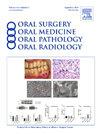Automated detection and classification of mandibular fractures on multislice spiral computed tomography using modified convolutional neural networks
IF 2
3区 医学
Q2 DENTISTRY, ORAL SURGERY & MEDICINE
Oral Surgery Oral Medicine Oral Pathology Oral Radiology
Pub Date : 2024-08-05
DOI:10.1016/j.oooo.2024.07.010
引用次数: 0
Abstract
Objective
To evaluate the performance of convolutional neural networks (CNNs) for the automated detection and classification of mandibular fractures on multislice spiral computed tomography (MSCT).
Study Design
MSCT data from 361 patients with mandibular fractures were retrospectively collected. Two experienced maxillofacial surgeons annotated the images as ground truth. Fractures were detected utilizing the following models: YOLOv3, YOLOv4, Faster R-CNN, CenterNet, and YOLOv5-TRS. Fracture sites were classified by the following models: AlexNet, GoogLeNet, ResNet50, original DenseNet-121, and modified DenseNet-121. The performance was evaluated for accuracy, sensitivity, specificity, and area under the curve (AUC). AUC values were compared using the Z-test and P values <.05 were considered to be statistically significant.
Results
Of all of the detection models, YOLOv5-TRS obtained the greatest mean accuracy (96.68%). Among all of the fracture subregions, body fractures were the most reliably detected (with accuracies of 88.59%-99.01%). For classification models, the AUCs for body fractures were higher than those of condyle and angle fractures, and they were all above 0.75, with the highest AUC at 0.903. Modified DenseNet-121 had the best overall classification performance with a mean AUC of 0.814.
Conclusions
The modified CNN-based models demonstrated high reliability for the diagnosis of mandibular fractures on MSCT.
利用修正的卷积神经网络在多层螺旋计算机断层扫描上对下颌骨骨折进行自动检测和分类
评估卷积神经网络(CNN)在多层螺旋计算机断层扫描(MSCT)上对下颌骨骨折进行自动检测和分类的性能。回顾性收集了 361 名下颌骨骨折患者的 MSCT 数据。两名经验丰富的颌面外科医生对图像进行了注释,作为基本真相。利用以下模型检测骨折:YOLOv3、YOLOv4、Faster R-CNN、CenterNet 和 YOLOv5-TRS。用以下模型对断裂点进行分类:AlexNet、GoogLeNet、ResNet50、原始 DenseNet-121 和修改后的 DenseNet-121。根据准确性、灵敏度、特异性和曲线下面积(AUC)对其性能进行了评估。AUC 值使用-检验进行比较,<.05 的值被认为具有统计学意义。在所有检测模型中,YOLOv5-TRS 的平均准确率最高(96.68%)。在所有骨折亚区域中,体部骨折的检测最为可靠(准确率为 88.59%-99.01%)。在分类模型中,体部骨折的 AUC 值高于髁部骨折和角部骨折,均在 0.75 以上,其中最高的 AUC 值为 0.903。改进型 DenseNet-121 的整体分类性能最佳,平均 AUC 为 0.814。基于改进型 CNN 的模型在 MSCT 下颌骨骨折诊断中表现出很高的可靠性。
本文章由计算机程序翻译,如有差异,请以英文原文为准。
求助全文
约1分钟内获得全文
求助全文
来源期刊

Oral Surgery Oral Medicine Oral Pathology Oral Radiology
DENTISTRY, ORAL SURGERY & MEDICINE-
CiteScore
3.80
自引率
6.90%
发文量
1217
审稿时长
2-4 weeks
期刊介绍:
Oral Surgery, Oral Medicine, Oral Pathology and Oral Radiology is required reading for anyone in the fields of oral surgery, oral medicine, oral pathology, oral radiology or advanced general practice dentistry. It is the only major dental journal that provides a practical and complete overview of the medical and surgical techniques of dental practice in four areas. Topics covered include such current issues as dental implants, treatment of HIV-infected patients, and evaluation and treatment of TMJ disorders. The official publication for nine societies, the Journal is recommended for initial purchase in the Brandon Hill study, Selected List of Books and Journals for the Small Medical Library.
 求助内容:
求助内容: 应助结果提醒方式:
应助结果提醒方式:


